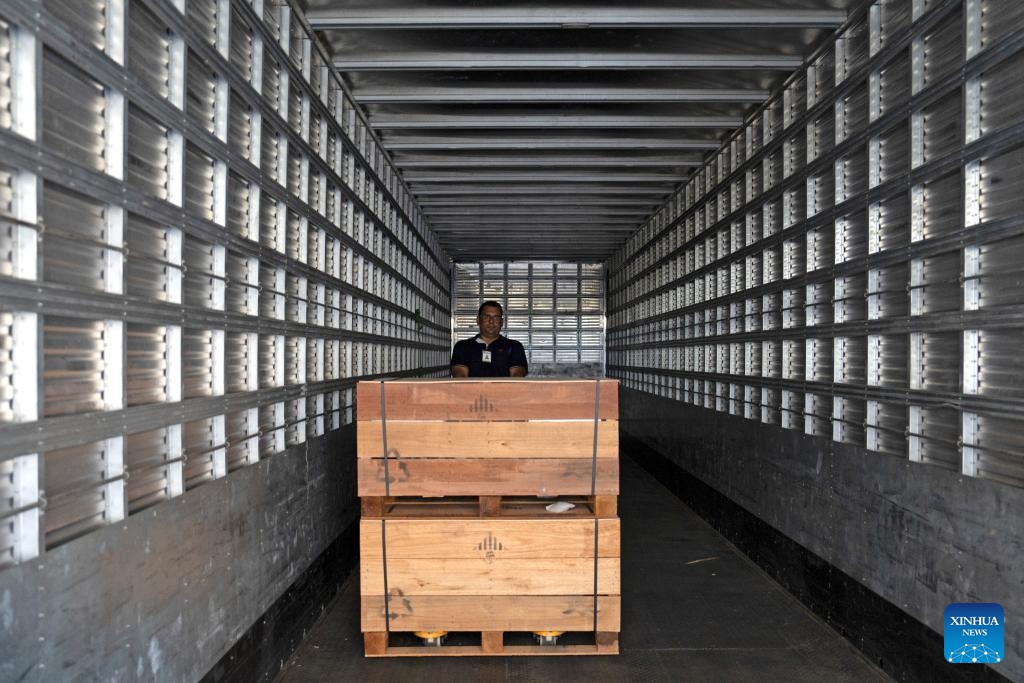
A worker assembles battery packs onto a vehicle at the BYD battery factory in Manaus, capital of Amazonas state, Brazil, March 12, 2024. BYD Brazil was established in 2014. In addition to marketing zero-emission electric forklifts, trucks, vans, and passenger cars in the Brazilian market, the company has set up the electric bus chassis factory and solar panel factory located in Campinas, as well as the battery factory located in Manaus to meet local market demands.(Photo: Xinhua)
China's first large-scale sodium-ion battery energy storage station officially commenced operations on Saturday. The station will help improve peak energy management and foster widespread adoption of clean energy, marking a significant advancement in China's use of clean and renewable energy.
The Fulin sodium-ion battery energy storage station was launched in Nanning, South China's Guangxi Zhuang Autonomous Region. On its first day of operation, 10,000 kWh of newly generated energy stored in the battery was distributed, fulfilling the daily electricity needs of up to 1,500 households.
"This shows a widespread adoption of sodium-ion battery energy storage technology, demonstrating China's growing prowess in renewable energy and storage. It also bolsters efforts toward dual carbon goals of peaking carbon emissions by 2030 and achieving carbon neutrality by 2060," Liu Ranran, secretary of the Standards Working Group on Lithium ion Batteries and Similar Products at the Ministry of Industry and Information Technology told the Global Times.
Funded and built by the Guangxi branch of China Southern Power Grid, the electricity storage station is able to initially produce 10 megawatt-hours (MWh). Once completed, it will reach 100 MWh, generating 73 million kWh of clean electricity annually. The output will cut 50,000 tons of CO2 emissions and meet the energy needs of 35,000 households, according to officials involved in the project.
Additionally, the storage and release of electricity is precise and intelligent. The station actively engages in peak load regulation, facilitating the flexible management of renewable energy. Technicians can monitor station equipment in real-time using electronic displays.
Sodium-ion batteries have great ability to swiftly charge, reaching 90 percent capacity in a mere 12 minutes. They also perform well in improving versatility, functioning smoothly in temperatures ranging from -40 C to 80 C, making them a prime choice for addressing energy storage needs in colder climates, according to Liu.
As sodium-ion battery technology advances, it is emerging as a cost-effective alternative to lithium-ion batteries, paving the way for China's rapid expansion of large-scale centralized energy storage facilities. The progress is expected to complement various energy storage methods, propelling the country's transition towards clean and sustainable power generation, Liu said.
Global Times




